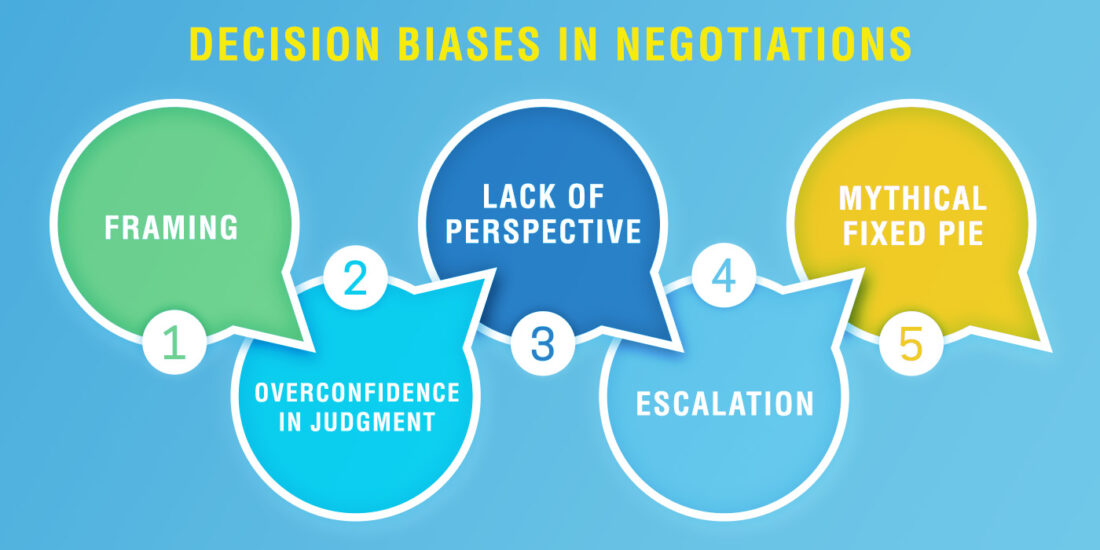Balancing Personality Traits: Capitalizing on the strengths of our “true self”
Have you ever encountered a family business leader that needed to be the protagonist, had little tolerance of being criticized, was highly seductive and had a board of directors that admired him and hardly questioned him? This family business leader is likely to do anything to remain in the spotlight and may have little empathy towards other people. This business leader’s attitude is likely to produce feelings of frustration and emotional dissatisfaction, making it challenging to establish and maintain healthy personal relationships.
This example represents some of the possible manifestations of an unbalanced, narcissistic personality. If the emergence of such a personality is not recognized in time and balanced, it is very likely that the behavior will become stronger and crystalize, acquiring stronger significance in the leader’s personality structure. However, if the business leader works to achieve a balanced narcissistic personality, by cultivating a deep sense of self-awareness, the positive side of narcissism can emerge. Balanced narcissists are confident in accepting responsibilities, have a strong entrepreneurial drive, and their personal image of success is often very inspiring for other people.
When personality traits are balanced, they can represent important strengths for fostering healthy family systems. Family business advisors can help their clients to focus on personality change and development. How can we help ourselves, as well as our clients, to balance personality traits and capitalize on the strengths derived form our “true self?”
Understanding personality traits: some insights from personality psychology
Our personality can be defined as a deep-rooted pattern of behavior that is stable and contains elements that are cognitive (i.e., thoughts), volitional (i.e., will), affective (i.e., emotions) and behavioral tendencies (i.e., inclinations). Personality can be seen as a “molecule” made up of two homocentric dimensions and the results of the interaction of these dimensions, one with the other. The two dimensions are temperament and character.
Temperament is formed by constitutional elements determined by our genetic inheritance. These are very hard to change. Physiological traits play an important role in temperament as well as emotional patterns and other unconscious and automatic behavioral propensities. In short, temperament is our inherited tendency of behaving, thinking and feeling.
Contrastingly, we acquire our character, and therefore we can change it. Our character depends on our actions, experiences, education, and culture as well as our social environment. It is subject to constant mental and environmental influences, with which our own personal resources interact to change our personality to a greater or lesser extent, in either positive or negative ways.
Overall, our personality—our overt behavior—is the result of the coexistence and interaction of the temperament and character dimensions of our personality. The resulting patterns of our behavioral tendencies are our personality traits. Personality traits are manifested as readiness to think or act in a determined fashion, and influence the way we perceive reality, reflect and act upon a variety of stimuli and situations. They are responsible for involuntary and voluntary behavior affecting our decision making process.
A balanced personality—one in which our personality traits are of average intensity (i.e., normal) needs work and is not easily achieved. It is a life-long process, meaning that we can continue tuning our personality throughout our lives. We all suffer from psychological weaknesses, to a greater or lesser extent, that often emerge from imbalances in the intensities of our personality traits. In everyday life, these imbalances usually produce feelings of frustration and emotional dissatisfaction, making it challenging to establish and maintain healthy personal relationships.
Some of the most common personality traits manifested by family business leaders are presented in the table below[1]. In this table we can see the balanced and unbalanced manifestation of each of the traits.
| Personality trait | Balanced trait | Unbalanced trait |
| Antisocial | Autonomous, self-sufficient, independent, courageous, capable of confronting risky situations, personal image of confidence and high self-esteem. | Aggressive, irritable, often fails to fulfill obligations, can have difficulties for planning important issues, can be very impulsive, may be disinterested in other people. |
| Narcissistic | Confident in accepting responsibilities, ambitious, desire and capability for influencing others, personal image of success that often inspires others, entrepreneurial drive, leadership capacity. | Arrogant, may have little interest in other people, egocentric, grandiose sense of self-importance: self-idealization, necessity to be admired by others, sense of entitlement, little tolerance of being criticized, and lack of empathy. |
| Histrionic | High social intelligence, affectionate, sensitive to other people’s problems, high level of empathy, extrovert, very good at building relationships, friendly, attractive in social settings. | Excessive need for appreciation from other people: tends to feel uncomfortable when not the center of attention. May be envious, excessive dependence on other people’s opinions. Low emotional control: tends to be manipulative with others. |
| Dependent | Generous, reliable and affectionate. Friendly and docile, can be a good follower of a leader. Has an attitude of service. | May present exaggerated dependency on other people, low self-esteem and devaluated self-image. Can be insecure and may have difficulties in decision-making. Fear of disapproval, can feel distressed when being alone. |
| Obsessive compulsive | Responsible, reliable and predictable. Methodical, organized and hard working. Is capable of assuming the consequences of his or her acts. Can display a personal image of correctness and loyalty. | Perfectionist, excessively keen on order, details and rules. Can be insecure and pessimistic. May have difficulty in adapting to new situations, and difficulty in delegation. Can be severe, intolerant, inflexible, rigid and demanding. May be over focused on work. Is often correct with others but cold. |
| Schizoid | Extremely creative, genius. An original thinker, curious, self-confident, autonomous and independent. | Emotional coldness, introvert, and difficulties in establishing and maintain relationships. Excessive indifference to praise or criticism. Reserved and may present an antisocial attitude. Tendency to solitude, tendency to get captivated in his or her own thoughts. |
When personality traits are balanced, they can represent important strengths for family business leaders, allowing them to show a magnanimous attitude towards the family and the business. Contrastingly, when personality traits become unbalanced, several maladaptive behaviors can emerge disrupting family harmony and putting at risk the success of the family business.
Towards a balanced personality: some key steps
If we take a moment, and reflect upon our own family, it may be helpful to revisit the table above and recognize the personality traits that characterize us and other family members We will notice that our family is a group of unique individuals, each with personalities that are interdependent, exercising a continuous and reciprocal influence on one another. In business families, the interaction among family members tends to be stronger and deeper as compared to other families. This strong interconnectedness creates highly complex systems in which the quality of relationships becomes vital to maintaining group harmony and success across generations Maintaining high quality relationships require taking that individuals take responsibility for them in at least two ways.
The first way is to recognize and accept our own personality traits and focus on personality change and development of our own unbalanced traits. In this first step, a mindset of growth and development is crucial. Being open to feedback and advice are key attitudes for creating the right psychological climate that will allow us to develop balanced and healthy personalities. Below are some strategies that can help us and our clients develop balanced personalities.
- Take a personality test: It can be helpful to take a personality test in order to find out more about our own personality traits: the MMPI-2 (Minnesota Multiphasic Personality Inventory)[2] and the TCI-Report (Temperament and Character Inventory)[3] can be good starting points.
- Engage in a 360 feedback: Once we have identifyed our personality traits through a personality test, it may be helpful to ask work colleagues, family members and friends for feedback regarding our traits. Using the reports resulting from the personality tests can help us guide the 360 feedback process.
- Find external advise: It may be very helpful to work with a coach or psychologist throughout the process of self-discovering. External advisors can become a wonderful motivational resource, especially at the beginning of the process.
The second part of the relationship responsibility is recognizing and accepting the fact that other family members have their own personalities. This means that they too have their own particular way of thinking, feeling and behaving. The activity of recognizing and acknowledging our own personality traits and those of others – personality traits spotting — is key to gaining perspective on why others behave the way they do. In this second step, an attitude of curiosity, humility, compassion, love and perspective is key to understanding the complexity of interpersonal relations. This second step will be easier if we have done a good job in recognizing and accepting our own personality traits.
- Face the mirror: Carl Jung argued “Everything that irritates us about others can lead us to an understanding of ourselves.” Those personality traits that we spot in others and that deeply disturb us can be an excellent mirror of the personality traits that are unbalanced within us and need further work. This exercise often takes a great deal of humility and valor.
- Be curious: Taking an active interest in the personality traits of others can be very helpful. Try to explore further what personality traits are present in different contexts and how the personality traits of others interact with your own. Actively seek information about the people that are close to you and ask questions regarding their own way of experiencing life.
- Develop your social intelligence: Social intelligence can be cultivated through the practice of mindfulness, increasing awareness of the thoughts and feelings of one’s self and others. After one becomes aware of a personality trait, the next step is to label it, and if appropriate, express it to another. It may be useful to consider how this has an impact on the family business context.
When we are able to adapt to changes in our environment and are capable of building strong and loving relationships and when we feel creative, at peace with the people around us, and in tune with our true self, it means that we are doing a good job at developing and balancing our personality traits. The psychologically healthier we are, the more we can promote a positive family climate and increase the success of the family business.
[1] Adapted from Ceja & de Dou (2014). The role of personality in the succession process of family-owned firms. Working paper IESE Business School.
[2] MMPI-2 (Minnesota Multiphasic Personality Inventory) Butcher, Graham, Williams, and Ben-Porath / Development and Use of the MMPI-2 Content Scales – Cloth ISBN: 978-0-8166-1817-0
[3] Cloninger C.R. (2004). Feeling good: The Science of well-being. New York, NY: Oxford University Press.
About the contributor:
 Lucía Ceja Barba is a research assistant in the family-owned business department of IESE Business School, University of Navarra. Her focus in on organizational behavior, family business, chaos theory and nonlinear dynamical systems theory. Lucia can be reached at [email protected].
Lucía Ceja Barba is a research assistant in the family-owned business department of IESE Business School, University of Navarra. Her focus in on organizational behavior, family business, chaos theory and nonlinear dynamical systems theory. Lucia can be reached at [email protected].





